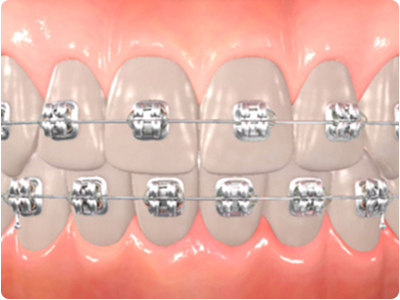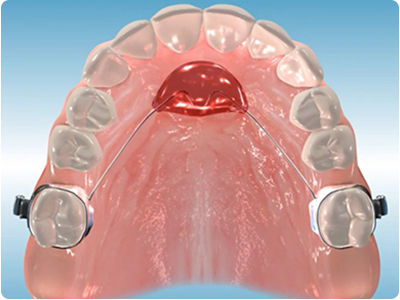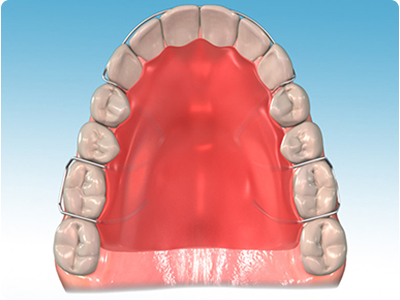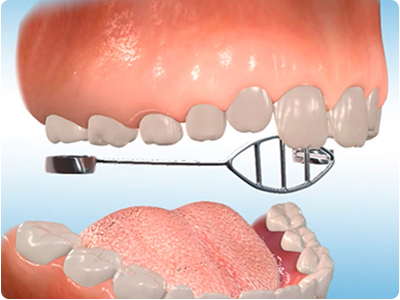Orthodontic Appliances
- Archwire
- Biteplate
- Brackets
- Elastics
- Facemask
- Fixed Retainer
- Forsus
- Herbst
- Invisalign
- Lingual Arch
- Mara
- Mouthguard
- Nance
- Palatal Expander
- Removable Retainer
- Separators
- Thumb Crib
- Transpalatal Bar

A metal wire which is attached to your brackets to move your teeth.

A Biteplate is a removable appliance similar to a retainer that is used to correct a deepbite or to help correct a crossbite.

Brackets are the small metal or ceramic modules attached to each tooth. They serve as guides to move the teeth and hold the archwire in place.

Elastics or rubber bands for braces help move the upper and lower teeth relative to each other, ultimately achieving a better bite. The orthodontic rubber bands are typically effective for correcting overbites, underbites, or other types of alignments of the jaw. They are also useful for moving a tooth out of alignment or to close a space in the mouth.

Reverse pull headgear is usually used in children with a class III malocclusion or a malocclusion requiring a stimulation of the upper maxilla to grow forward. It is also known as a facemask.

Fixed retainers consist of a metal wire bonded to the back of the teeth. Fixed retainers can stay in place indefinitely.

The Forsus appliance is an orthodontic appliance that is affixed to the teeth. Springs mounted on the side of the appliance force the lower jaw forward upon closure of the jaws retraining the bite and correcting a Class II problem.

The Herbst Appliance is a functional appliance used in some growing patients to stimulate growth of the lower jaw.

Invisalign® is a series of clear, removable teeth aligners that both orthodontists and dentists use as an alternative to traditional metal dental braces.

A lingual arch is an orthodontic device which connects two molars in the upper or lower dental arch.

A Mara is a fixed appliance consisting of metal caps and small, hook-like devices. The hooks impact during the bite to drive the lower jaw forward retraining the bite and correcting a Class II problem.

A device that is used to protect your mouth from injury when you are participating in sports. The use of a mouth guard is especially important for orthodontic patients, to prevent injuries.

The Nance button is utilized to hold teeth in position to allow for the movement of other teeth. The impact of the button on the lower palate creates force on the back molars.

A palatal expander, also known as a rapid palatal expander, rapid maxillary expansion appliance, palate expander or orthodontic expander, is used to widen the upper jaw so that the bottom and upper teeth will fit together better.

A gadget that the orthodontist gives you to wear after your braces are removed. The retainer attaches to your upper and / or lower teeth and holds them in the correct position while your jaw hardens and your teeth get strongly attached to your jaw. At first, you wear the retainer 24 hours a day, and then only at night.

Separators are tiny rubber bands or springs that your orthodontist places between your back teeth. These separators prepare your mouth for braces by creating a small gap between these teeth. This space allows for the placement of a metal band around your molar, which anchors your braces in your mouth.

Separators are tiny rubber bands or springs that your orthodontist places between your back teeth. These separators prepare your mouth for braces by creating a small gap between these teeth. This space allows for the placement of a metal band around your molar, which anchors your braces in your mouth.

The Transpalatal Bar (TPA) is a fixed appliance that is attached to bands on the upper molar teeth. The bar that sits across the roof of the palate fits into a soldered clip located on the bands.






